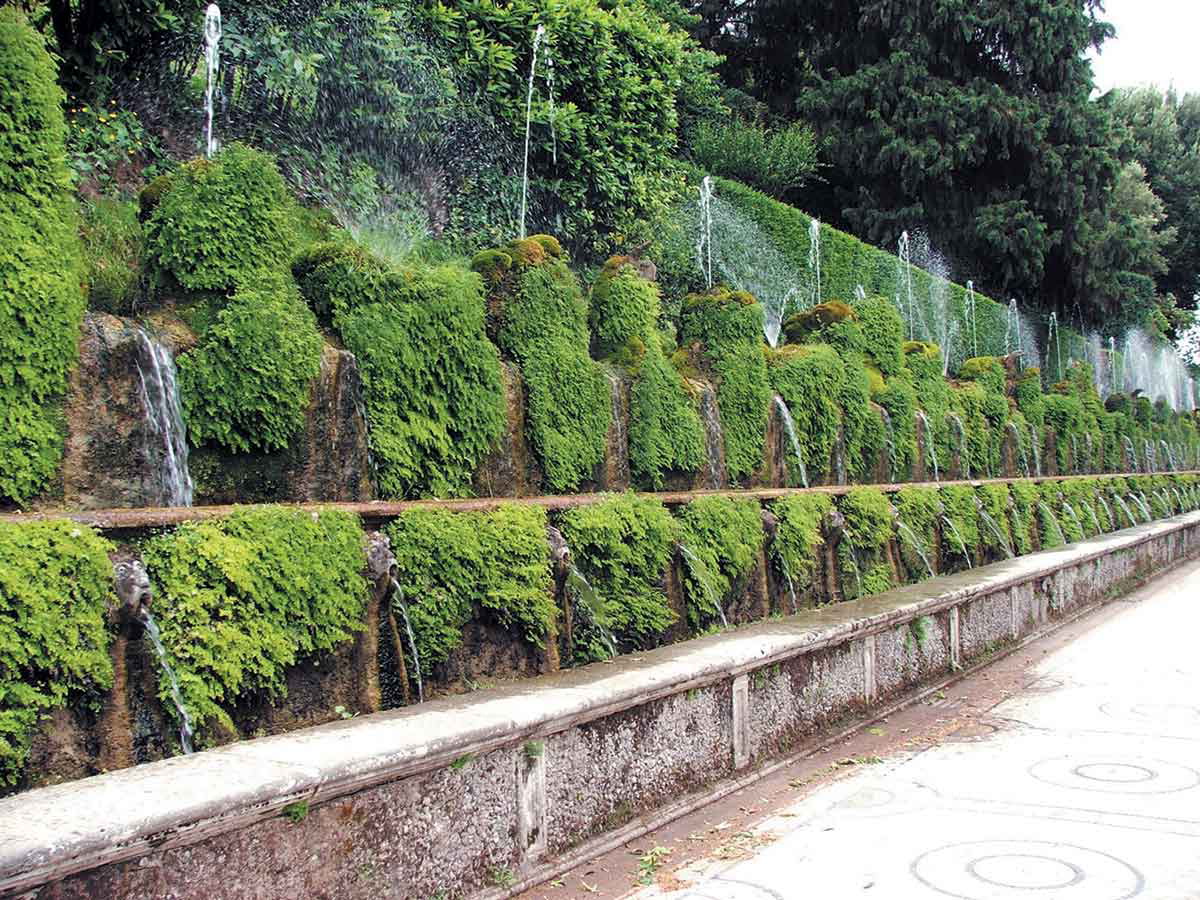The Guerniero Herkules Celebrates 300th Birthday
In the north Hessen city of Kassel, the baroque Bergpark Wilhelmshöhe celebrates its fourth anniversary as Germany’s newest UNESCO World Heritage site this summer, and it is also the 300th anniversary of the bizarre but beloved Herkules statue.
The Roman architect Giovanni Francesco Guerniero (1665–1745) created not only the sculpture but this entire ambitious scheme of outsize structures, aquatic engineering, and botanical excess beginning in 1701. The picturesque mountainside monument is the largest park built on a hillside in Europe. Highlights include the giant statue of Hercules and water displays, including dramatic waterfalls, wild rapids, and the geyser-like Grand Fountain that shoots water 60 metres into the air. The magnificent baroque cascade was commissioned by the Landgrave Karl of Hesse and is both an amusing overstatement of masculine energy and a very impressive feat of the power of water pressure. Reservoirs and channels behind the Hercules statue feed water to a complex system of hydro-pneumatic devices that supply the site’s water theatre, grotto, and fountains. The eruption of foam and droplets emanate from a vast octagon housing a cistern at the top of the mountain and that run down over a lengthy series of steps symmetrically attended by trees, ornamental pools, and statuary.
The broad axis that holds the fountains continues as the main street in the city of Kassel below. The fountain operates on Sundays and Wednesdays during the summer.
Guerniero’s Wilhelmshöhe garden is an example of the Classical Revival mode that ruled garden design from the era of the Italian Renaissance villa and reached a crescendo with the spectacular flora at Versailles. These gardens constitute a form of interactive art, stimulating and transforming sensory experiences and making the spectator an active participant in the creative process rather than a passive observer.
Although artificial, many water effects featured in Italian baroque gardens reproduced the natural movement of water. Bollori, closer to the bubbles exuded by swamps rather than those produced by mountain streams, were employed in the garden of the Medici villa at Pratolino north of Florence. Such bollori were occasionally combined into water-chains, which, as at Wilhelmshöhe, required sloping terrain, and thus were particularly suitable for terraced layouts. In the garden of the Villa d’Este at Tivoli, there are stairs with stepped sidewalls attributed to Pirro Ligorio and known as Scale dei bollori (after 1567), where water, rising in short jets from small rectangular basins, was conducted from one level to another through the mouths of grotesque mascheroni. a simple version of this plan, where water merely fell through mascheroni into a series of small oval pools carved into stone slabs, was found at the Fontana dei Mostaccini (1619–21) created by Romolo del Tadda for the Boboli gardens in Florence.
Reference:Antje Scherner. “Giovanni Francesco Guerniero — ein Architekt aus dem Umkreis Carlo Fontanas? Neue Quellen zu Leben und Werk des Baumeisters der Kasseler Wasserspiele.” Marburger Jahrbuch für Kunstwissenschaft, 1 January 2011, Vol. 38, pp.171-196.
Giovanni Francesco Guerniero, Herkules, c. 1701. Museumslandschaft Hessen Kassel.
Nighttime Geyser at Bergpark Wilhelmshöhe with Herkules. Photo: Malte Ruhnke.
Three views of Wilhelmshöhe, the Octagon, and Hercules, c. 1841-1949. © Bildarchiv Foto Marburg.
Adolph von Menzel. Herkules und Kaskade in Wilhelmshöhe bei Kassel.1841. Kupferstichkabinett, Staatliche Museen zu Berlin.
Pirro Ligorio, Hundred Fountains, after 1567, Tivoli, Villa d’Este Photo: Anatole Tchikine.
Romolo del Tadda, Fontana dei Mostaccini, 1619–21, Florence, Boboli gardens. Photo: Anatole Tchikine.
Jacopo Barozzi da Vignola, Fountain of the Giants, after 1568, Bagnaia, Villa Lante — detail of the receiving basin with stone rosettes. Photo: Anatole Tchikine.
Further Reading: Anatole Tchikine. 2016. “Watering the Renaissance Garden: Horticultural Theory and Irrigation Practice in Sixteenth-Century Tuscany.” In the journal Gardens, Knowledge and the Sciences in the Early Modern Period, pp. 269-288.
Giovanni Careri and Ferrante Ferranti. Baroques. Princeton, N.J., Princeton University Press, 2003.
Posted by Jean Marie Carey







